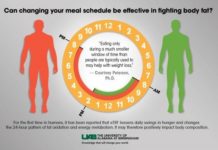 The market for over-the-counter cold medicines is worth $8 billion annually, with a hefty portion spent on drugs marketed as decongestants. But according to new research, the cash many of us will spend on non-prescription decongestants this cold and flu season won’t help us breathe any easier.
The market for over-the-counter cold medicines is worth $8 billion annually, with a hefty portion spent on drugs marketed as decongestants. But according to new research, the cash many of us will spend on non-prescription decongestants this cold and flu season won’t help us breathe any easier.
In a new study of more than 500 adult allergy sufferers, researchers found that the common, over-the-counter (OTC) decongestant, phenylephrine, was no better at unclogging noses than a placebo—even when given at higher doses than those currently approved.
The study’s authors called on the Food and Drug administration to strike phenylephrine from its list of effective nasal decongestants.
The study, published in The Journal of Allergy and Clinical Immunology: In Practice, isn’t the first to find phenylephrine useless at busting up nasal congestion. There’s a long history of weak evidence for phenylephrine, Leslie Hendeles, a professor of pharmacy and pediatrics at the University of Florida, told Ars.
In an accompanying editorial, Hendeles and colleague Randy Hatton, also at the University of Florida, echoed the call for the FDA to ditch phenylephrine and also called the process that led to its initial approval outdated. “There have been multiple changes to FDA’s review process for prescription drugs,” they wrote.”It is time for changes to the OTC approval process as well!”
Phenylephrine got the FDA’s green light as an OTC decongestant in the 1970s, mostly hinging on a few small-scale studies. In 2006, Hatton and Hendeles reviewed those studies, finding conflicting and questionable data sets. In total, they concluded, only four studies supported efficacy of phenylephrine at the approved dosage of 10 milligrams, while seven found no difference between the drug and placebo. “Thus, in our view, the [FDA] panel reached a specious conclusion that was not based on a systematic review of the available data,” they wrote.
The significance of their conclusion might seem moot if it weren’t for recent restrictions on phenylephrine’s rival, pseudoephedrine.
Since 2006, pseudoephedrine, an effective OTC decongestant used in medicines such as Sudafed, was pulled from drugstore shelves and placed behind pharmacy counters for fear it would be used to homebrew methamphetamine. The result was a dramatic spike in the use of phenylephrine, which quickly replaced pseudoephedrine in some drugs so that they could handily stay on shelves.
In 2007, a 12-person FDA panel reexamined the use of phenylephrine after Hendeles and others raised concern. In an 11 to 1 vote, the panel found that “the evidence is supportive that the 10 mg immediate release formulation may be effective.” But, the panel voted that more data was needed to show if higher doses would be effective.
That’s where the new study comes in. The study included five groups of about a 100 allergy sufferers each, which took either a placebo or a dose of 10, 20, 30, or 40 mgs of phenylephrine for a week. The higher doses weren’t any better than placebo.
The study was funded by Merck & Co, Inc., the pharmaceutical company that used to own the allergy medicine Claritin-D®, which contains the restricted pseudoephedrine (it’s now owned by Bayer AG). At one point, the company was considering swapping in phenylephrine so that Claritin-D would be easier for customers to buy. But with the recent data and a couple of other studies in 2009 that also found phenylephrine worked no better than placebo, the company gave up on the idea, Hendeles said.
Hendeles is preparing a new petition urging the FDA to re-review phenylephrine and has been in touch with the agency. He hopes a new advisory panel will convene in the next 6 months or so.
Source: Eli O. Meltzer, MD, Paul H. Ratner, MD, MBA, Thomas McGraw, PhD; Oral Phenylephrine HCl for Nasal Congestion in Seasonal Allergic Rhinitis: A Randomized, Open-label, Placebo-controlled Study. The Journal of Allergy and Clinical Immunology: In Practice, 2015. DOI: 10.1016/j.jaip.2015.05.007.














